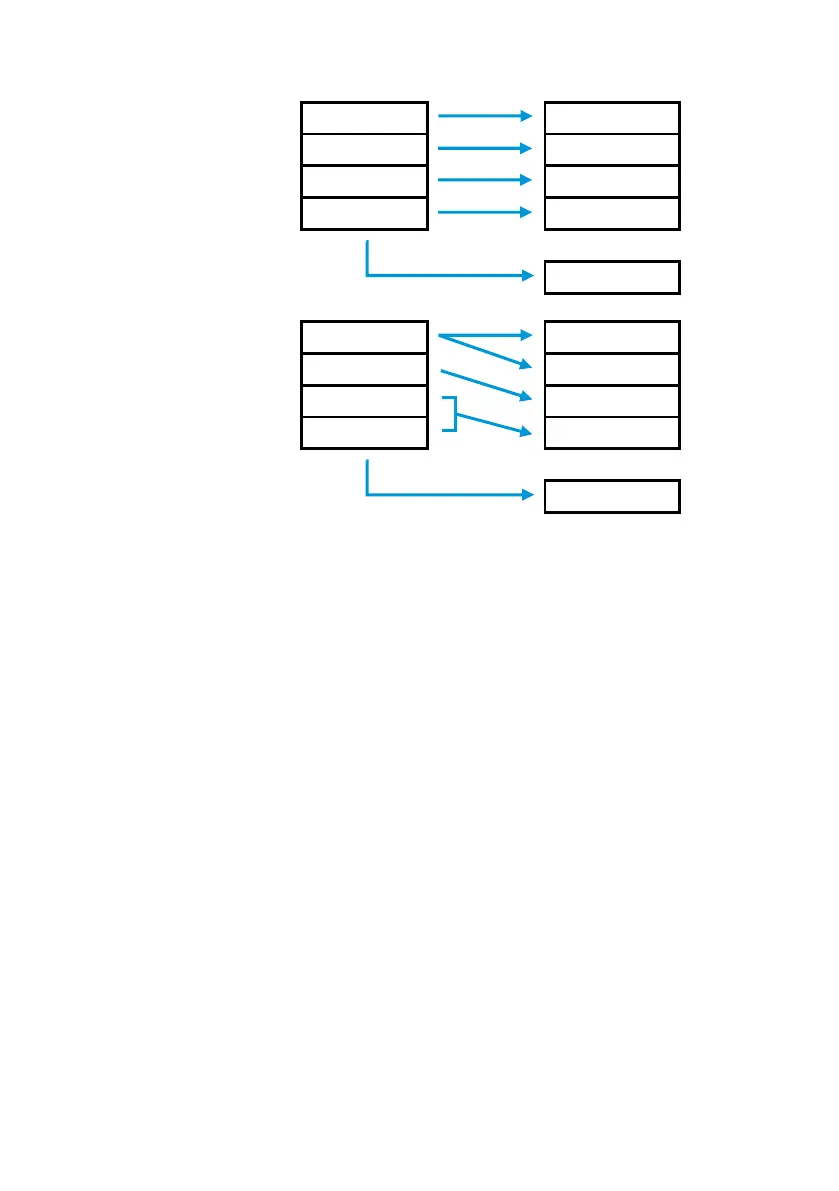Section 12: Calculating with Matrices 175
T
6.0000
6.0000
Z
5.0000
5.0000
Y
4.0000
4.0000
X
matrix A
result mat.
⁄
LAST X:
matrix A
T
5.0000
5.0000
Z
4.0000
5.0000
Y
matrix B
4.0000
X
matrix A
result mat.
*
LAST X:
matrix A
Several matrix functions operate on the matrix specified in the X-register
only and store the result in the same matrix. For these operations the
contents of the stack (including the LAST X register) are not moved—
although the display changes to show the new dimensions if necessary.
For the > 7, > 8, and > 9 functions, the matrix
descriptor specified in the X-register is placed in the LAST X register and
the norm or (for > 9) the determinant is placed in the X-register.
The Y-, Z-, and T-registers aren’t changed.
When you recall descriptors or matrix elements into the X-register (with
the stack enabled), other descriptors and numbers already in the stack
move up in the stack—and the contents of the T-register are lost. (The
LAST X register is not changed.) When you store descriptors or matrix
elements, the stack (and the LAST X register) isn’t changed.
In contrast to the operation described above, the O | and l |
functions do not affect the LAST X register and operate as shown on the
next page.

